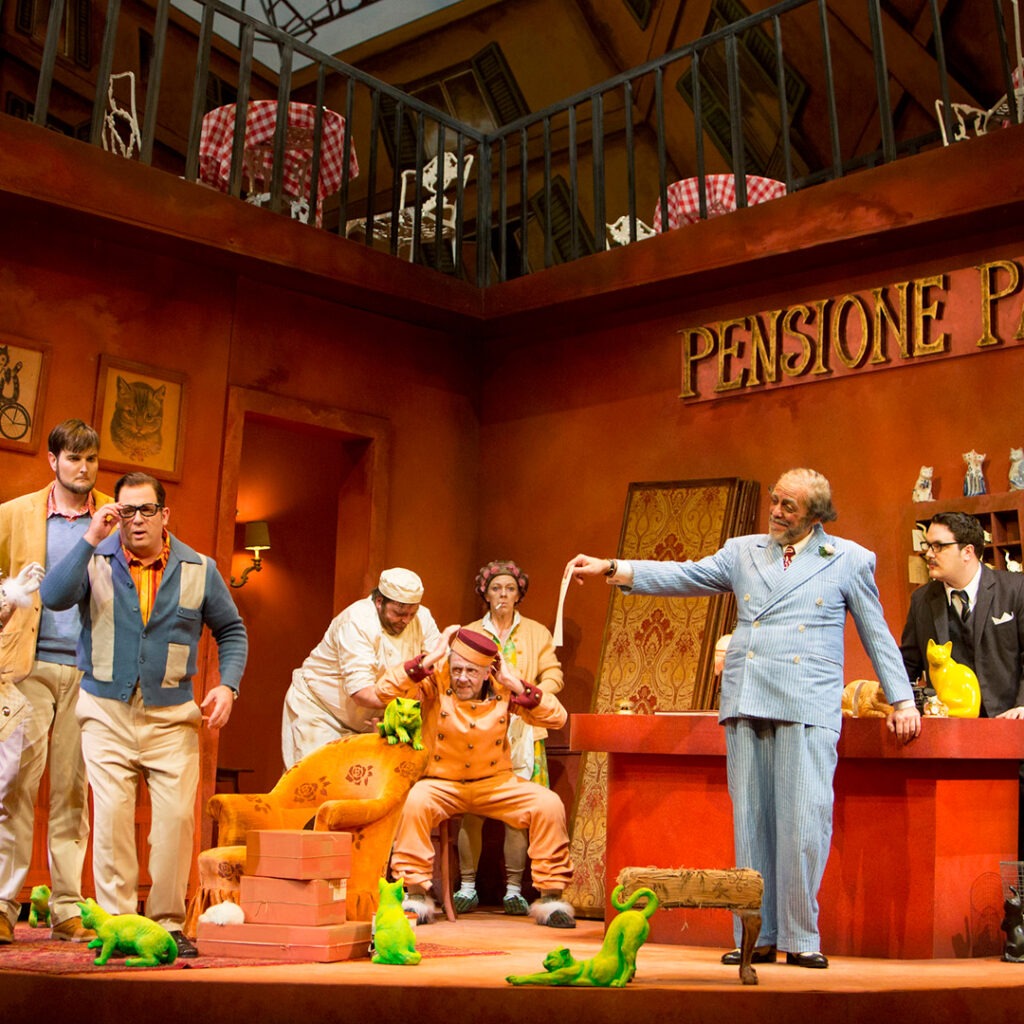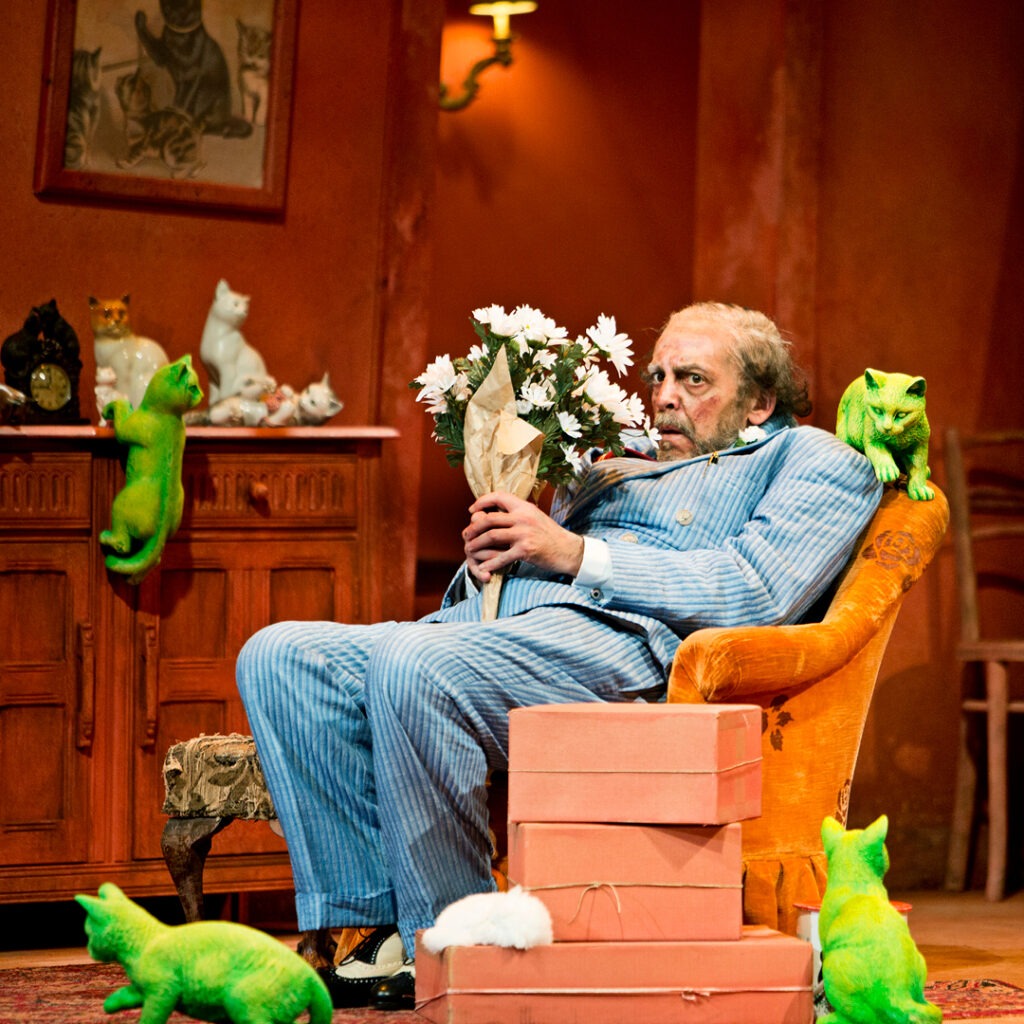Top 5 Things To Know About Don Pasquale (Or, what to expect when you’re expecting to see Don Pasquale)
Date | Author |
|---|---|
November 12, 2023 | Stephen Lyons |

1. Donizetti: hit-maker of the people A prolific composer who influenced the likes of Verdi and Rossini, Donizetti tailored his works not only to the unique talents of the great singers of his time, but to the audiences who would fill opera houses to hear his beautifully melodic orchestrations. If the Billboard charts existed in 1843, Donizetti would’ve aimed directly for #1 with Don Pasquale, and exhaled with the sweet relief of achievement upon hitting the bullseye. Unless Taylor Swift also existed in 1843, in which case Gaetano might find the board already porcupined with darts, and have to settle for some territory on the corkboard wall protector that surrounds it. 2. Ring my bel canto, my bel canto ringers The melodies in Don Pasquale are incredibly catchy and memorable, but they’re far from simple. It takes prodigious talent to make the hard work sound easy, and a breezy sprezzatura is achieved through much stitching and unstitching. When the piece premiered, the cast was absolutely stacked with the finest and most popular singers, hand-picked by the composer and guaranteed to bring the house down. True to the bel canto style of leaning into expressive beauty, Don Pasquale is loaded with sensational flourishes and melodic runs of breathtaking velocity. When you come to the performance, listen closely and you may hear in a singer’s voice the echoes of Donizetti’s giddy giggling from when he first composed one of his I-dare-you passages. 3. Don’t I know you from somewhere? The titular Don is really one of a kind, in that there’s a kind of guy we’ve met many times throughout the years in song, story, and across the table at obligatory family holiday dinners, and he’s one of them. The same can be said for Norina, Ernesto, and Malatesta. This isn’t a quibble or a criticism. Donizetti’s comedic work references the character types from the commedia dell’arte form, popular in 16th-18th century European theatre: Pasquale takes on the Panetone mantle, sad-clown shadows of Pierrot cast over his lovesick nephew Ernesto, and Dr. Malatesta smells strongly of Scapino. These parallels don’t diminish their impact, though. It’s more that the characters are built on a widely-recognizable foundation that allows us to take in the broad brushstrokes quickly, then key in on the quirks and details that are unique to Pasquale and company. The jury is still out on whether Norina is more of a Columbina, a Rachel, or a Monica, though.

4. A career crescendo Donizetti wrote something in the range of 70 operas, and had penicillin been discovered in the 1840s, he would certainly have left an even more extensive legacy. But despite his declining physical health, Donizetti wrote Don Pasquale when he was at the height of his musical powers. It was a resounding and immediate success throughout Europe, and is still considered by many to be the high point of the opera buffa form and tradition. Of course, at every party we go to there’s that contrarian hipster who claims that the OG (operatic Gaetano) composer’s career peaked with 1818’s two-act melodrama Enrico di Borgogna, but literally no one else has ever said this, and we can’t figure out who keeps inviting this guy to parties. 5. The bright lights behind the production The last time acclaimed creative duo Barbe & Doucet captured the imaginations of Vancouver audiences was with their bold take on La Boheme back in 2019 (which feels like a long, long time ago, no?). They’re back with a splash, and a colourful one at that. After digging deeply into the score, they decided that the creative vitality and energy of mid-1960’s Rome was an ideal setting for Donizetti’s hilarious, hijinx-laden “generation clash” opera: “We imagined that Don Pasquale owns a small, run-down pensione. Old and something of a hermit, he leaves the running of the hotel to his nephew Ernesto and to his staff – a rum bunch including a chain-smoking chambermaid, a greasy cook and a past-it porter, so old that he has has shrunk inside his uniform. A chorus of tourists come and go.” Barbe & Doucet haven’t just brought eye-popping colour to the sets and costumes; their whimsical, canny mid-century Technicolor filter has added intriguing new layers to the story and its characters, and given audiences some seriously fun stimulus for the senses.




